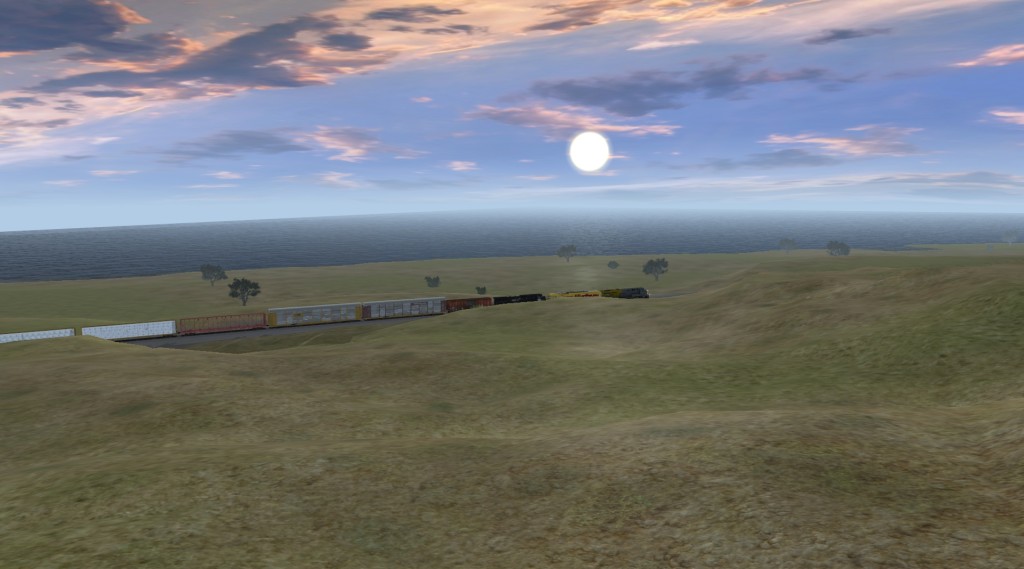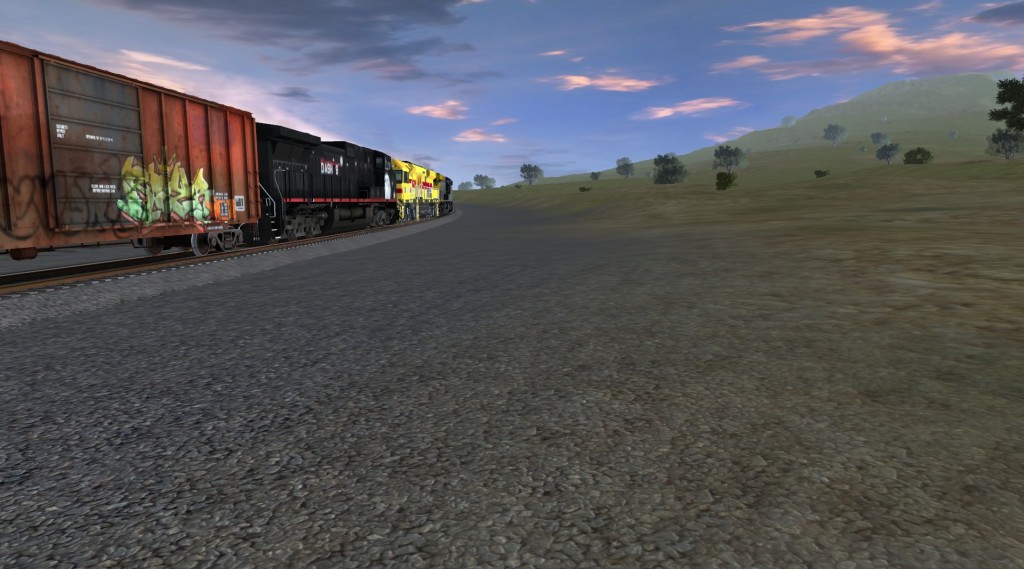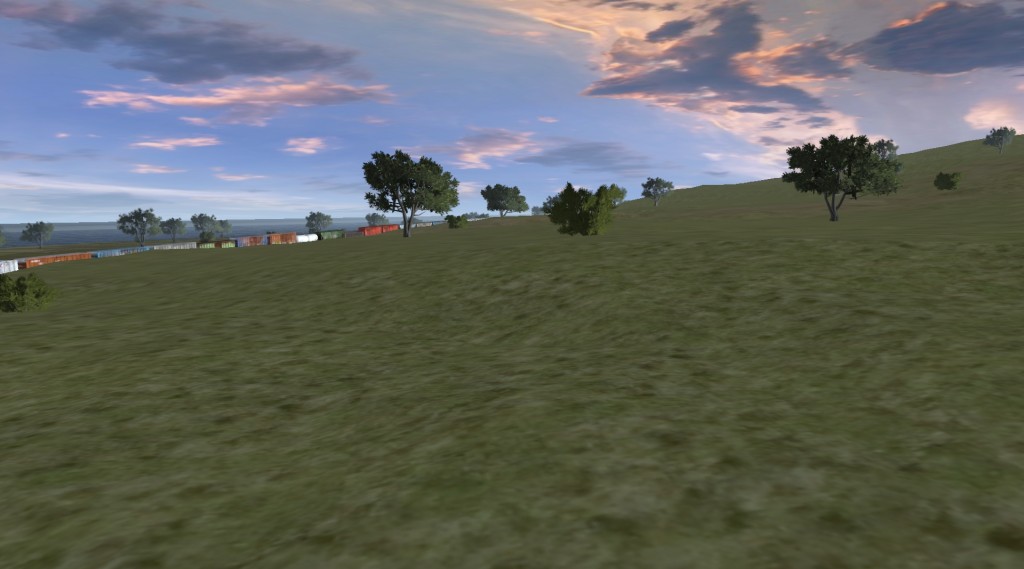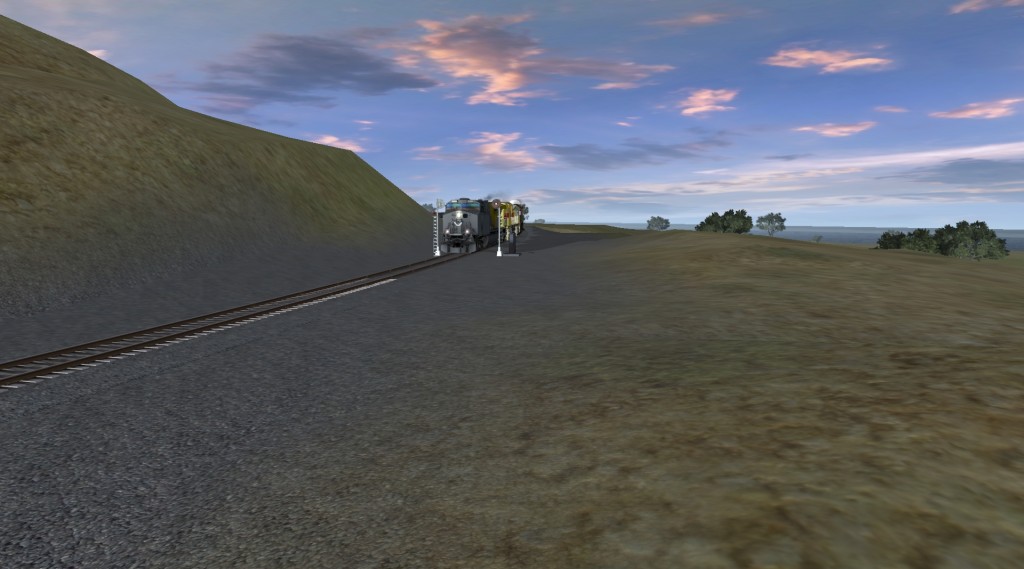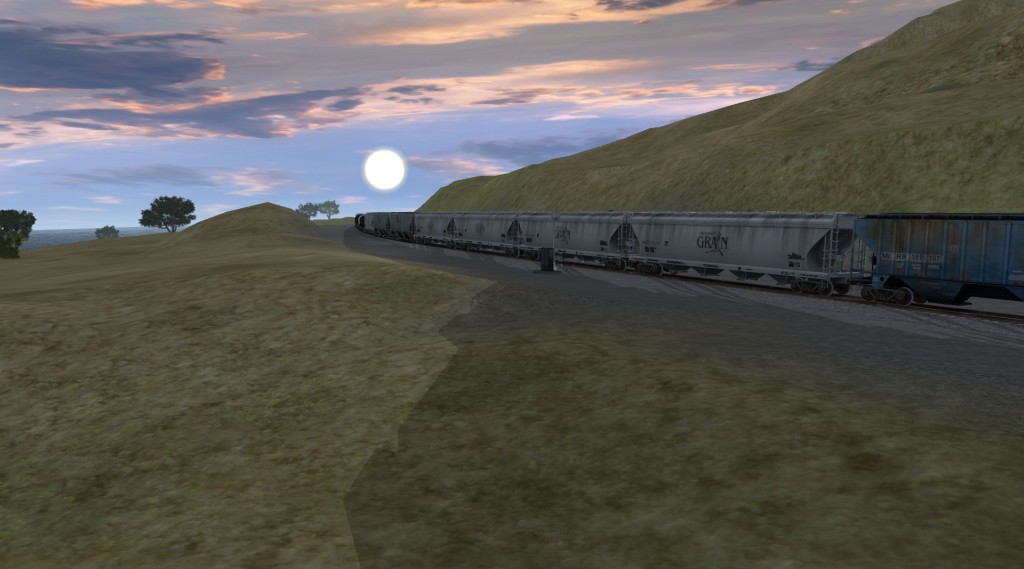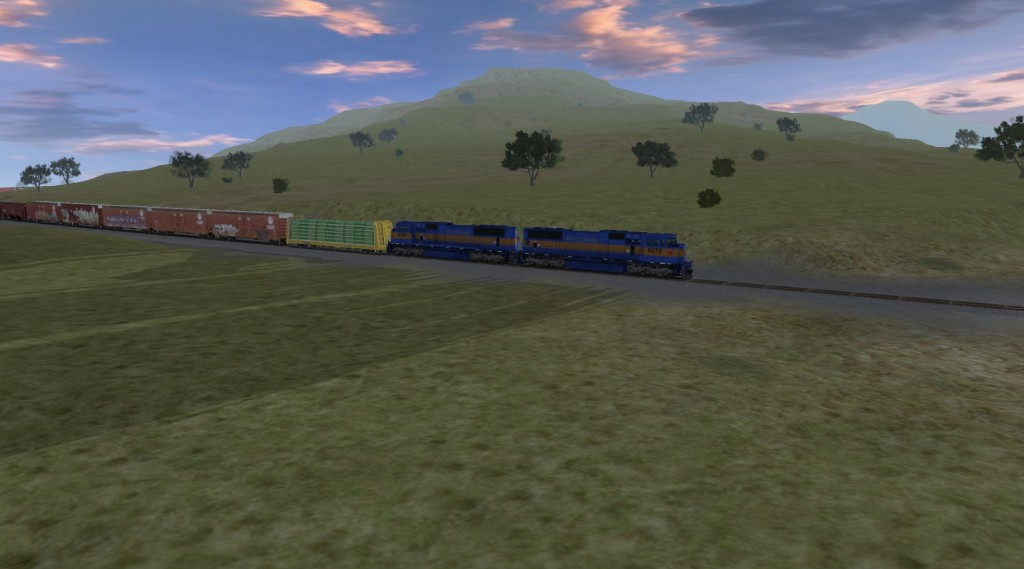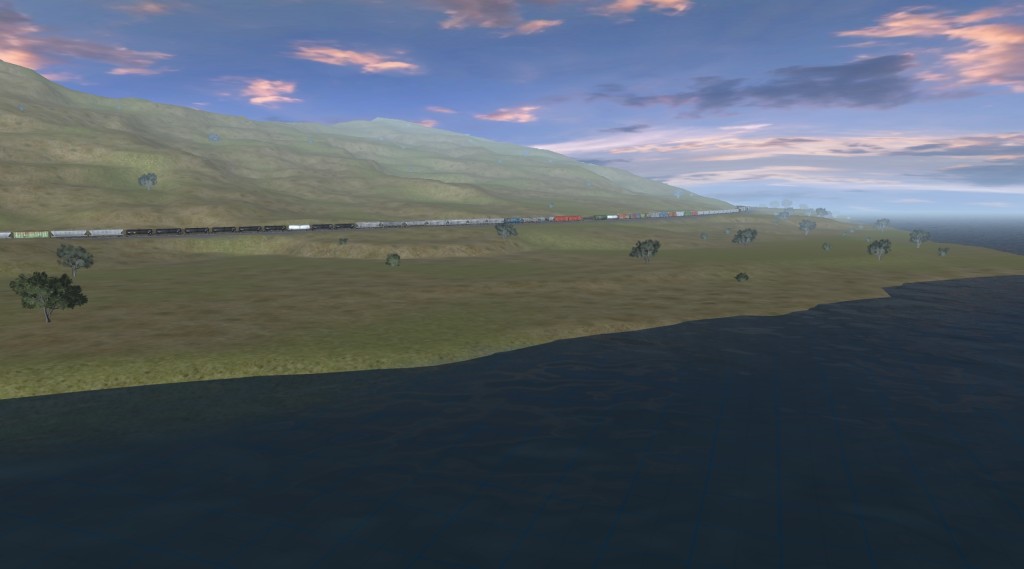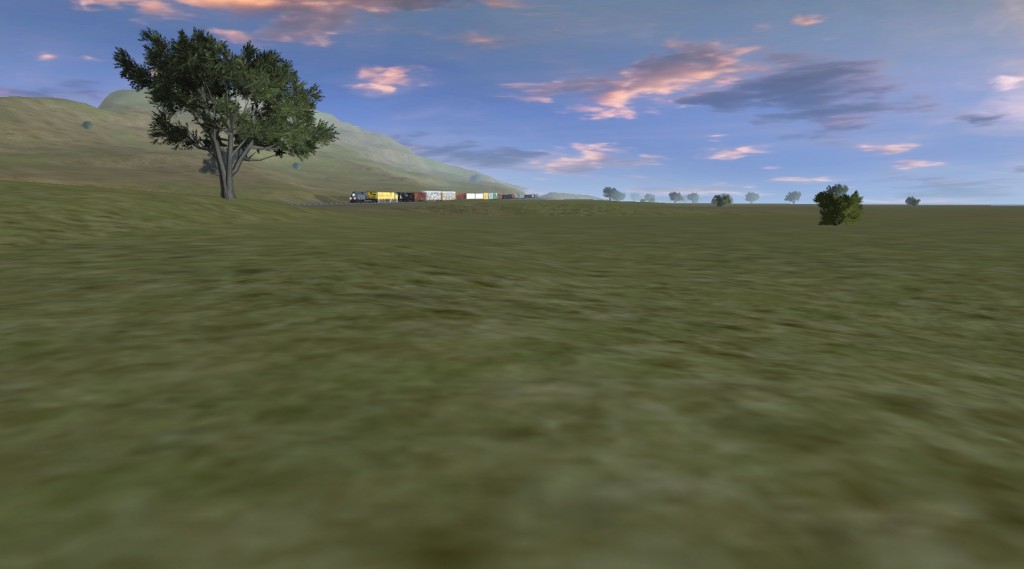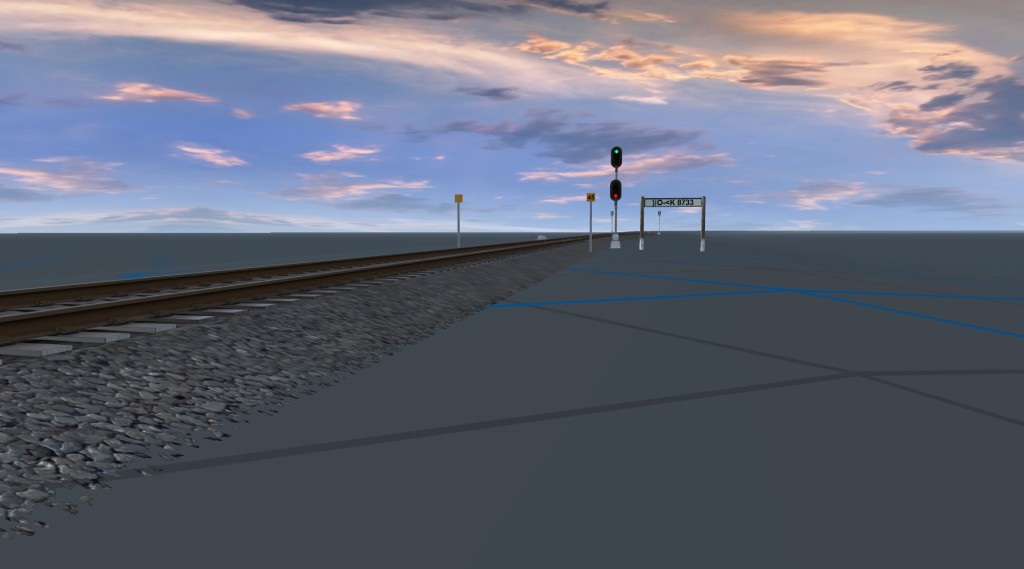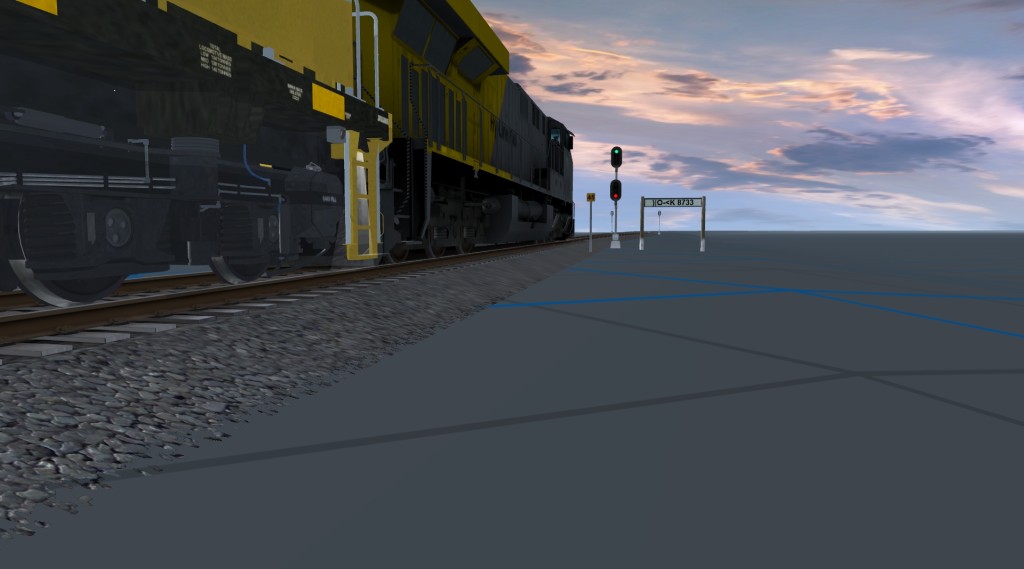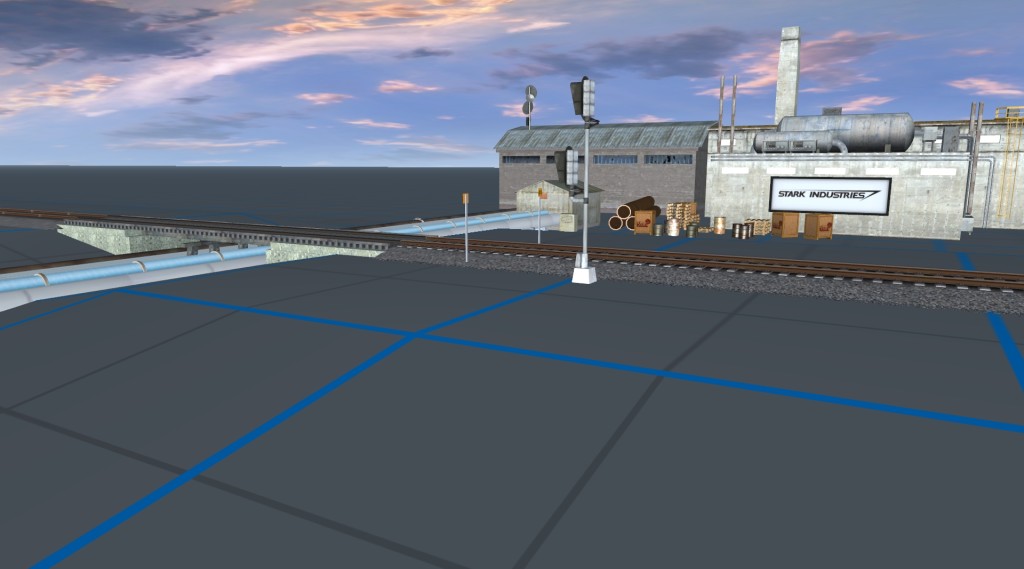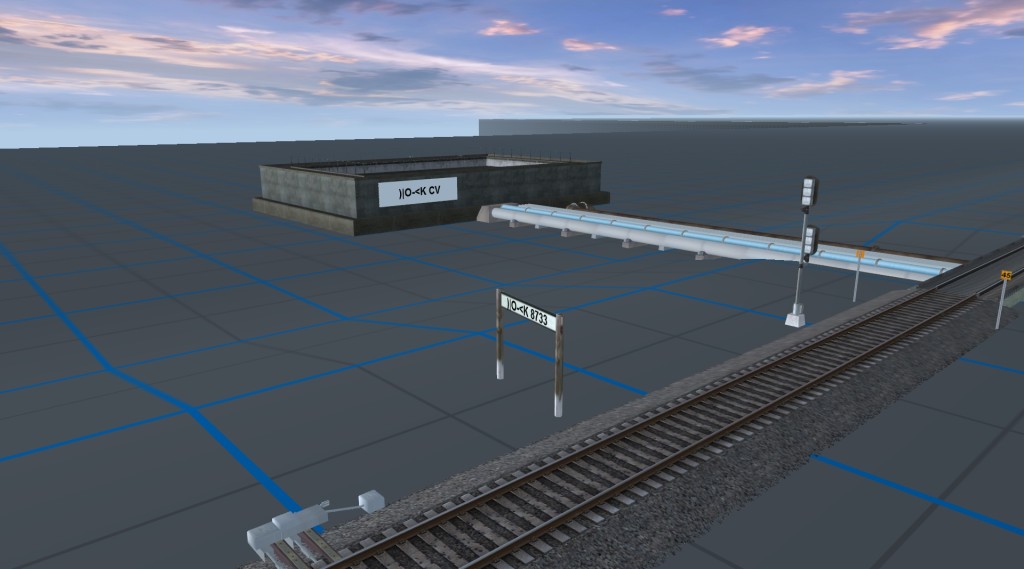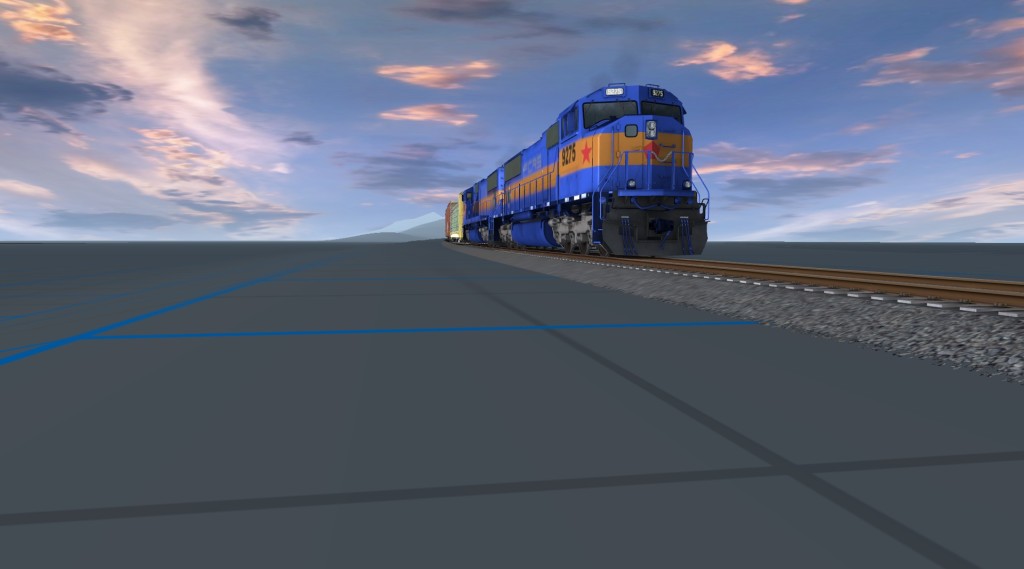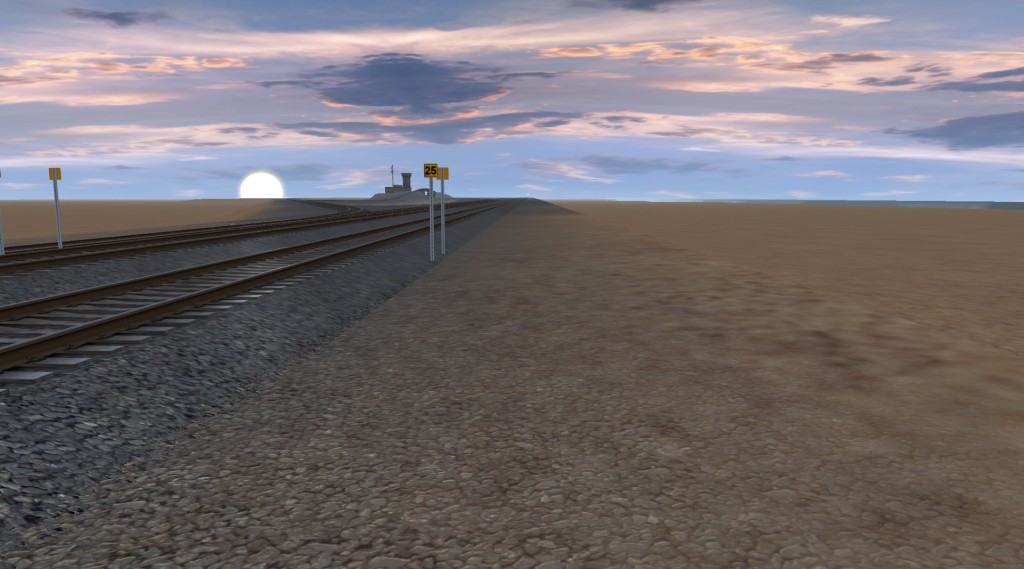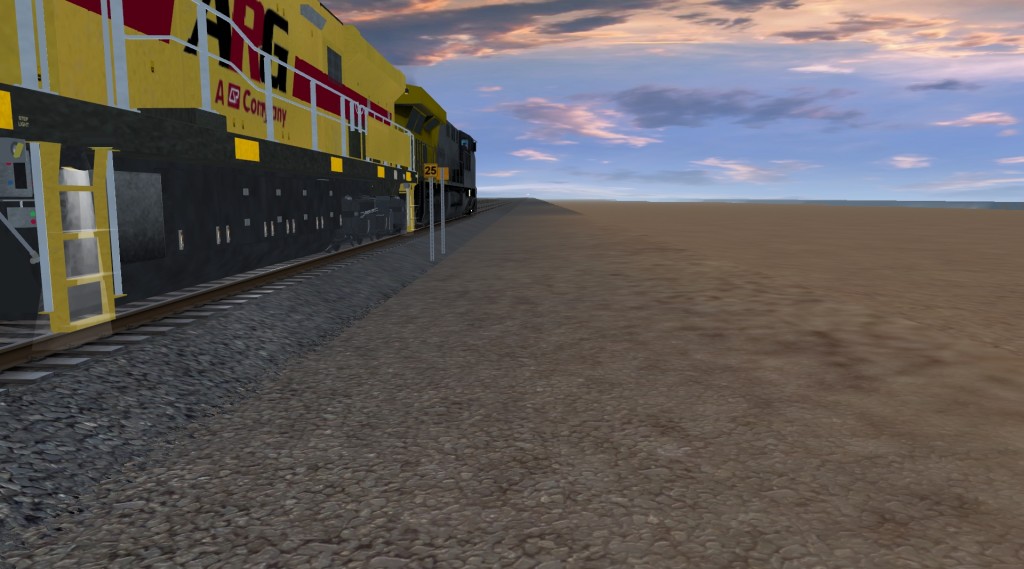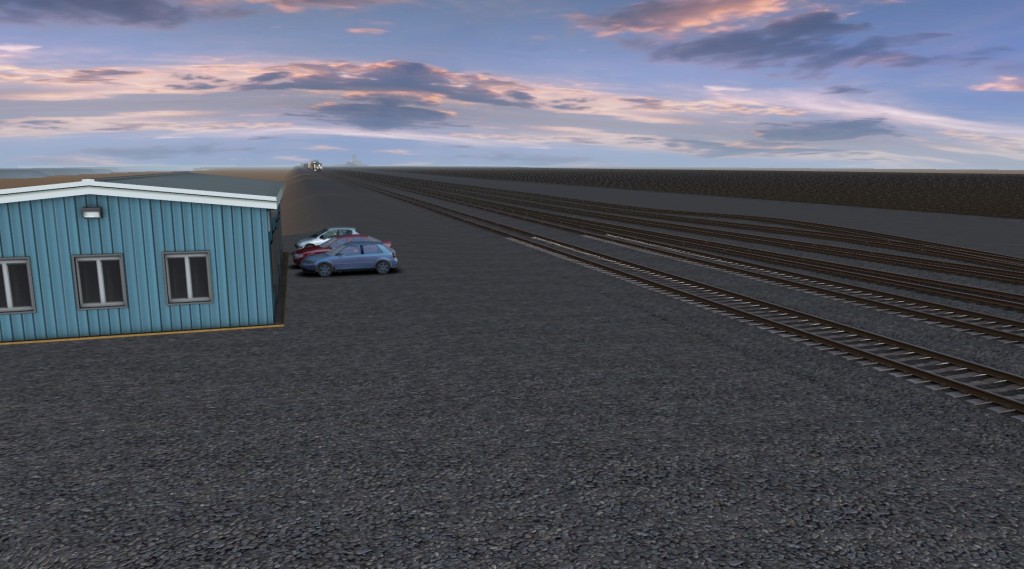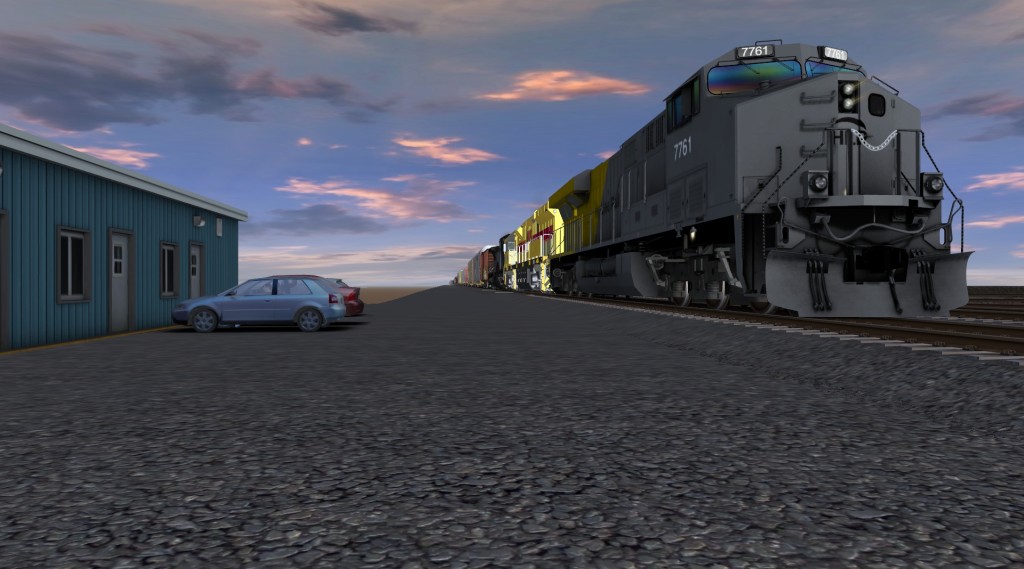WARNING: LARGE NUMBER OF PICTURES
Welcome to Serkafka. This is the route which has been hinted at in previous posts. Its name is officially “The Serkafkan Grand Trunk Line,” and it connects southern Sondia and Odessa with the west. A short history on Serkafka will be forthcoming; to place it here would not be prudent according to our editors, so we shall go straight to the photographs.
The overview of this route, because it is so large, will be broken up into three parts. The first is this one, following an enormous 151-car Hy-Line Rail manifest over the southern portion of the route up until Machina Yard. The second part will detail the operation of Machina Yard and the surrounding area, and the third part will follow a Serkafkan Independent Government Railways train over the mountain range that necessitated the construction of the line in the first place. And so, without further ado, HLR train M-1284.
We start after the crossing of the Eezh river as M-1284 growls and squeals around a rather large bend. Up front are three RGE products, an HLR ES44AC, an FCR H-CF44AC-B1, and an RGE DASH 9 demonstrator unit currently belonging to SAYZ (Serkafkan Indepentdent Government Railways). On the rear end of the train are a pair of FCR helpers, tacked on to help the train with the rather stiff gradients to the east of here.
Most of the railways in the east of the Roman continent follow the same specifications for couplers, brakes, track gauge, axle loading, etc. This is because of the St. John International Railway Standards Agreement, or SIRSA. SIRSA created an international standard system based on Vidalian standards, covering everything from crashworthiness standards to rail weight in pounds per yard and allowing for many disparate countries to interchange equipment, as is evidenced here. Some countries, like Dertinia, chose not to follow this agreement, but many countries did agree to the regulations on both Roma and the Kasversas.
You can clearly see here the mammoth length of this train. We found out later that this train was hauling the entire contents of a small Odessian yard, and the train shrank considerably after Machina Yard–but that’s for later.
Pumping stations like this one at Dokya are fairly common throughout Serkafka. To simplify their purpose, let’s just say that they take bad water, turn it into good water, and pump it into the national water system.
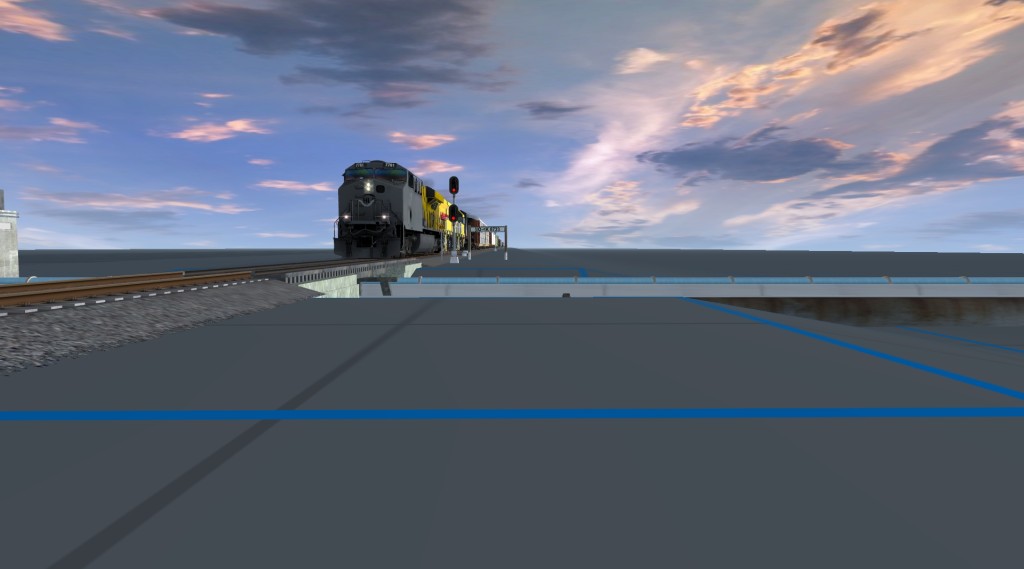
M-1284 hits the west switch of Dokya siding and growls over the pipe bridge that carries the trunk line over the pumping station’s pipes.
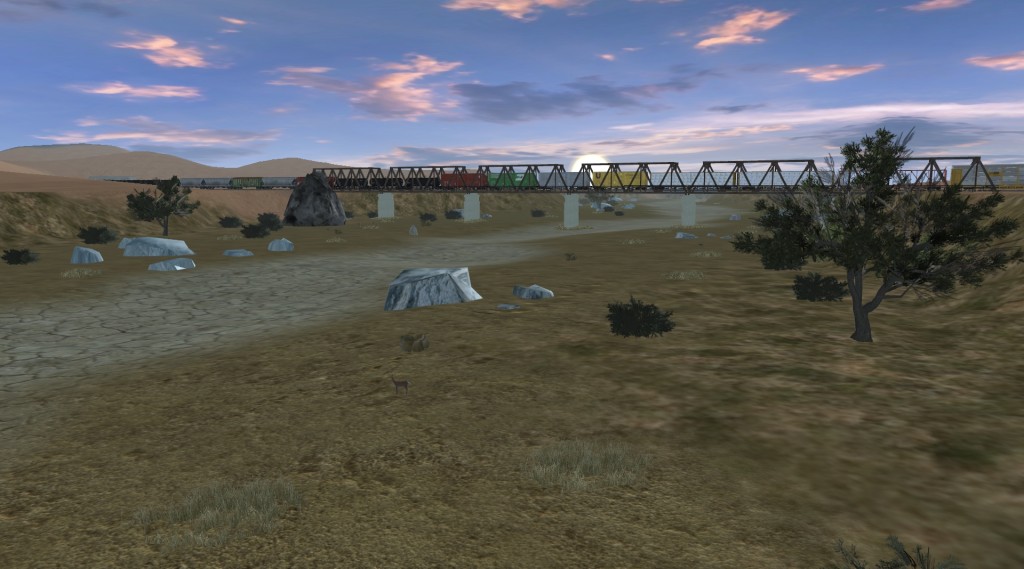
The train crosses a dry wash. There is water here, but it’s usually underground. The wash has flooded enough in the past to carve itself a miniature canyon, though. (I’m very proud of this scene in particular.)
Machina Yard lies conveniently at the convergence of four major rail lines in Serkafka: the Southern Grand Trunk Line to the south, the Main Grand Trunk Line to the north, the Reefyadas Cargo Line to the east, and the Dokcha Mainline to the southeast. This means that the yard is almost always crowded; however, for inexplicable reasons, the yard will sometimes completely empty out, leaving lots of rail and no railcars. Such was the case today as M-1284 rolled smoothly to a stop in front of the crew office.
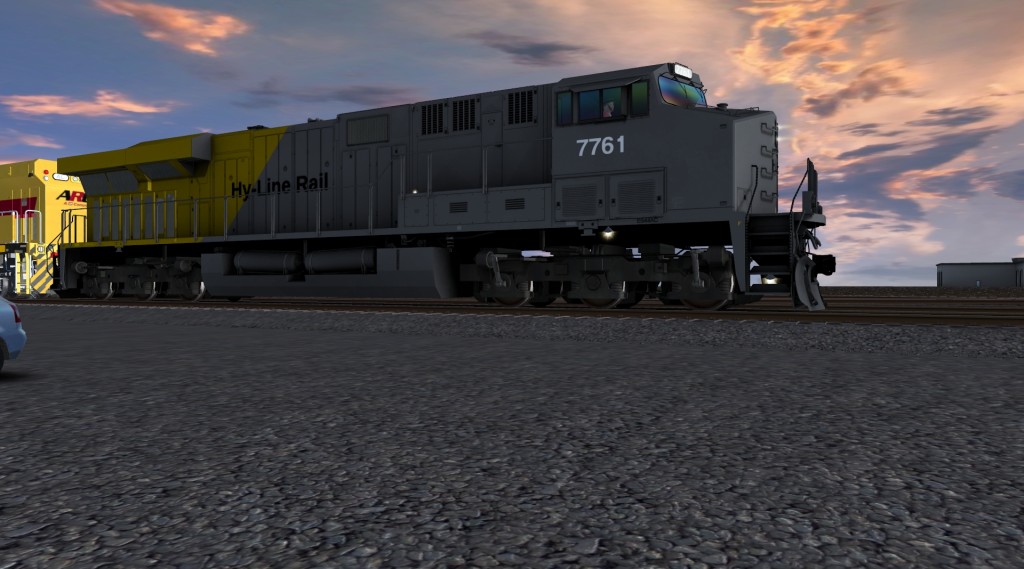
A final shot of M-1284 as we say goodbye to it here in Machinaton (the town in which Machina Yard resides).
Thanks for reading, and stay tuned for part 2 where we’ll cover the fascinating operations of Machina Yard!

